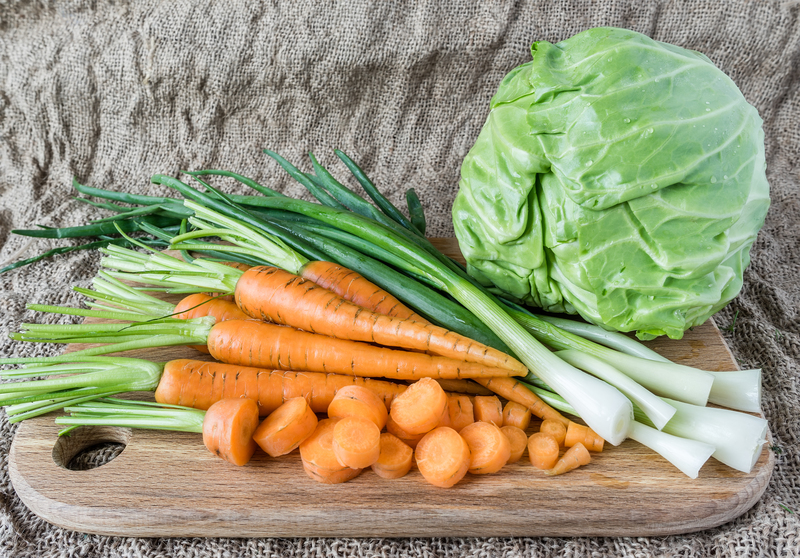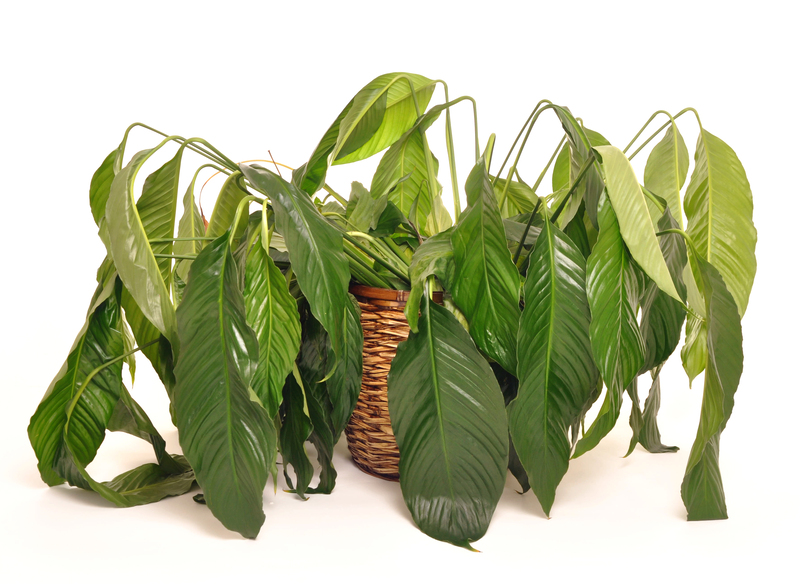Create a sustainable garden to mitigate climate impacts
Posted on 11/09/2025
Create a Sustainable Garden to Mitigate Climate Impacts
In the face of intensifying climate change, gardening isn't just a hobby--it's a solution. By creating a sustainable garden to mitigate climate impacts, you can transform your backyard into an eco-friendly sanctuary. This comprehensive guide explores practical steps, long-term benefits, and key concepts, empowering you to make a positive difference for the planet.

Why a Sustainable Garden?
The world's changing climate demands innovative, local actions. Sustainable gardening is a powerful way to enhance biodiversity, conserve water, improve soil health, and reduce carbon emissions--all while creating an oasis that benefits both humans and wildlife. Here's why integrating sustainable landscaping and resilient gardening practices is more crucial than ever:
- Reduces your carbon footprint through plant selection and management
- Supports pollinators and local wildlife, fostering biodiversity in urban settings
- Minimizes resource waste by conserving water and reusing organic materials
- Improves soil health and resilience, creating a robust ecosystem
- Offers food security by enabling homegrown produce with minimal environmental impact
Principles of Sustainable Gardening
To create a sustainable garden to mitigate climate impacts, start by understanding its core principles, which will guide every decision from planning to maintenance:
- Work with nature, not against it -- Observe your climate, microclimate, and local ecology to ensure your garden harmonizes with its environment.
- Increase plant diversity -- Support local biodiversity by mixing native species, vegetables, fruit trees, and flowering plants.
- Maximize resource efficiency -- Conserve water, use organic matter, and avoid synthetic chemicals wherever possible.
- Build healthy soil -- Focus on regenerative practices like composting and mulching to keep your soil living and productive.
- Promote carbon sequestration -- Select and care for plants that capture atmospheric carbon, aiding climate mitigation.
The Role of Plants in Climate Adaptation
Plants are climate heroes--they absorb carbon dioxide, release oxygen, cool the surrounding area, and help regulate the water cycle. Strategic plant choices can provide habitat, improve air quality, and even reduce heating and cooling needs for your home.
Planning Your Sustainable Climate Garden
Every beautiful, resilient garden begins with thoughtful planning. Here's how to create a sustainable garden to mitigate climate impacts from the ground up:
Step 1: Analyze Your Site
- Study your climate and soil: Understand your region's weather patterns, rainfall, sun exposure, and prevailing winds. Test your soil for nutrients, structure, and pH.
- Map your microclimates: Identify shaded, sunny, dry, or wet spots within your garden to match the right plants with the right conditions.
Step 2: Set Eco-Friendly Goals
Determine your priorities: Do you want to reduce water usage, improve food security, enhance pollinator habitat, or all three? Setting clear intentions helps guide decisions as you design your sustainable garden.
Step 3: Choose Climate-Resilient Plants
- Favor native species adapted to local conditions; they typically require less water and fertilizer.
- Select drought-tolerant and heat-tolerant varieties to withstand changing weather patterns.
- Include a mix of trees, shrubs, vines, and groundcover for structure and ecological resilience.
- Incorporate edible landscaping for sustainable food production.
Key Practices for a Climate-Smart Garden
Soil Health and Carbon Sequestration
Healthy soil is the foundation of any sustainable garden. Rich in organic matter and teeming with life, it sequesters carbon, holds moisture, and supports plants in the face of climate extremes.
- Compost kitchen and garden waste to return valuable nutrients to your soil and reduce landfill emissions.
- Mulch generously with leaves, straw, or woodchips to lock in moisture, suppress weeds, and protect soil from heat and erosion.
- Practice no-dig or low-till gardening to preserve soil structure and minimize disturbance to beneficial microbes.
Water Conservation in the Sustainable Garden
With drought and variable rainfall now common in many regions, water-wise gardening is a climate adaptation must. Here's how to create a garden that thrives even as water becomes scarcer:
- Install drip irrigation or soaker hoses to target the root zone and reduce waste.
- Collect rainwater in barrels or cisterns for use during dry spells.
- Group plants by water needs (a technique called hydrozoning) for efficiency.
- Choose deep-rooted plants that tap into subsoil moisture and survive extended dry periods.
- Reduce or eliminate lawns in favor of groundcovers, native wildflowers, or food plants that require less resource input.
Natural Pest and Disease Management
Avoid synthetic chemicals by harnessing nature's own balance:
- Grow a diversity of plants to attract beneficial insects that prey on pests.
- Encourage birds and pollinators by providing water, shelter, and nesting sites.
- Handpick pests and remove diseased material promptly to stop problems before they spread.
Circular Resource Use
A sustainable climate garden is a closed-loop system. Reduce, reuse, and recycle wherever possible:
- Reuse materials: Build beds with recycled wood, stones, or bricks.
- Make your own compost or worm castings instead of buying synthetic fertilizers.
- Grow from seed or exchange plants within your community to avoid plastic pots and transport emissions.
Climate Benefits of a Sustainable Garden
Reducing Urban Heat Island Effect
Vegetation cools the environment through shade and evapotranspiration. Planting shade trees and dense shrubs can lower surrounding temperatures, reduce reliance on air conditioning, and improve comfort during heatwaves.
Carbon Storage and Air Quality
Every tree, bush, and blade of grass in your garden draws down carbon from the atmosphere. Deep-rooted perennials, especially trees, act as long-term carbon sinks and help purify the air by trapping pollutants.
Stormwater Management
A garden rich in organic matter and covered in mulch acts like a sponge, absorbing rain and minimizing runoff. This helps prevent soil erosion, reduces the risk of flooding, and recharges groundwater supplies--critical services in a changing climate.
Design Ideas for a Climate-Smart Garden
- Rain Gardens and Bioswales: Plant shallow depressions with water-loving natives to capture and filter stormwater.
- Edible Forest Gardens: Mimic natural woodlands with layers (canopy, understory, ground layer) of food-producing plants for maximum biodiversity and resilience.
- Perennial Vegetable Beds: Replace annual-only vegetable beds with perennial crops like asparagus, artichoke, and rhubarb for year-after-year harvests with minimal disturbance.
- Wildlife Corridors: Connect your garden with neighbors' green spaces to allow wildlife to move and adapt as climate conditions shift.
- Pollinator Meadows: Convert sunny patches into mini wildflower meadows to support bees, butterflies, and beneficial insects throughout the season.
Gardening for the Future: Building Resilience
Climate adaptation is a journey. To create a sustainable garden to mitigate climate impacts, you'll embrace new challenges and discoveries each year:
- Stay observant: Monitor your garden's response to drought, storms, or pests, and adjust your strategies accordingly.
- Experiment: Try new varieties, mulches, or water-saving techniques to find what works in your microclimate.
- Connect with your community: Share seeds, compost, tools, and climate-smart knowledge with neighbors and local organizations.
- Educate and inspire: By demonstrating the power of a sustainable garden, you can motivate others to take climate-friendly action.
The Social and Health Benefits of Sustainability
Beyond reducing climate impact, a sustainable garden reconnects you to the rhythms of nature, provides fresh, nourishing food, and creates a tranquil retreat for mind and body. These benefits are vital as climate anxieties rise.
Overcoming Challenges
Every climate-smart gardener faces obstacles--extreme weather, water shortages, or pest outbreaks. But resilience is built through adaptation:
- Keep learning from credible garden and climate resources.
- Try resilient varieties if your old favorites struggle to survive in new extremes.
- Work with--not against--your environment by designing for windbreaks, water catchment, and shade as needed.
With each challenge surmounted, your garden becomes stronger and more climate-resilient for the years ahead.
Summary: Making an Impact, Garden by Garden
To create a sustainable garden to mitigate climate impacts is to invest in a healthier future for your community and planet. By applying these science-backed strategies and regenerative practices, your garden will flourish--delivering beauty, food, habitat, and real climate solutions right outside your door.
- Start with careful planning and climate-appropriate plants
- Conserve water and enrich your soil naturally
- Encourage biodiversity at all levels
- Close the loop by recycling and reusing resources
- Champion sustainable gardening and inspire lasting change
Every seed sown, every compost pile built, and every raindrop saved contributes to a web of climate resilience. Start your sustainable garden today and help nourish both your own backyard and our shared earth.

FAQs: Create a Sustainable Garden to Mitigate Climate Impacts
What is the most climate-friendly garden design?
A climate-friendly design combines native drought-resistant plants, rainwater harvesting, composting, and minimal lawn areas. Layered landscaping (trees, shrubs, groundcover) maximizes resilience against climate extremes.
Can edible gardens be sustainable?
Yes! Homegrown vegetables and fruit trees cut food transport emissions and provide resilient food sources. Use organic, regenerative practices--like crop rotation, mulching, and companion planting--for best results.
What are some easy starter projects?
Compost your kitchen scraps, swap grass for native flower beds, install a rain barrel, or plant a pollinator-friendly herb garden. Small changes can make a significant difference over time.
Resources to Get Started
- Native Plant Societies (for region-specific planting guides)
- Local Cooperative Extension's gardening resources
- Sustainable gardening forums and workshops near your area
- Books such as "Gaia's Garden" by Toby Hemenway and "Planting in a Post-Wild World"
Your sustainable garden journey begins today! Embrace the power of climate-wise gardening to nurture the earth--and your own well-being--every step of the way.

